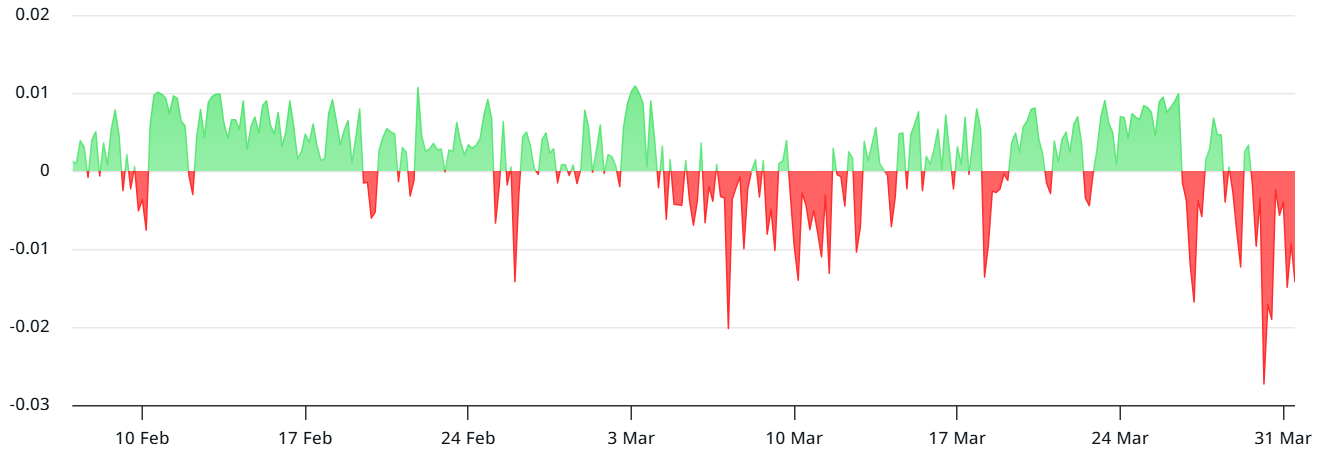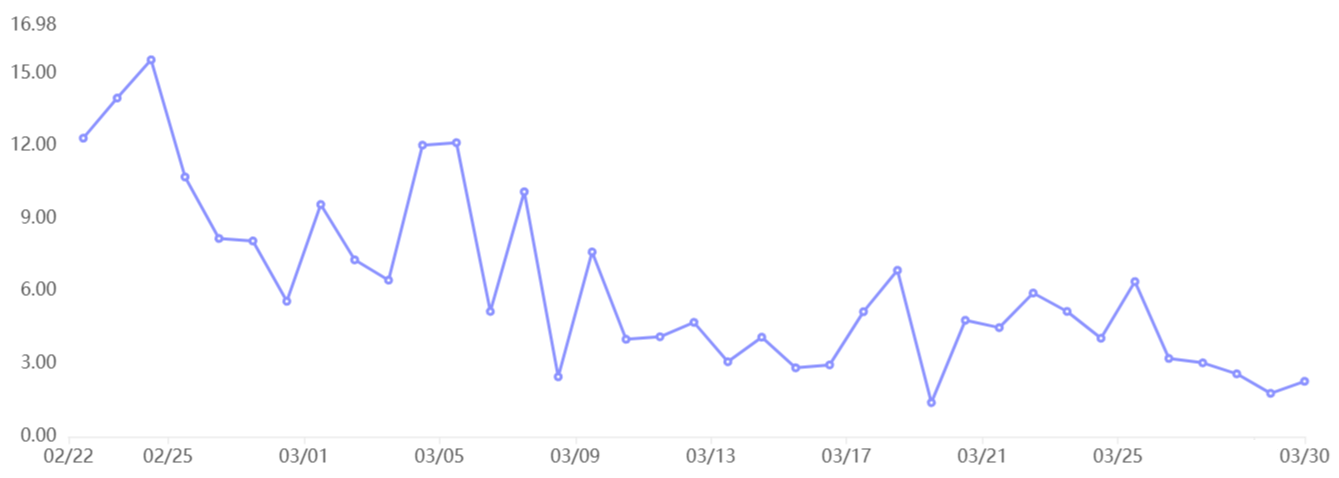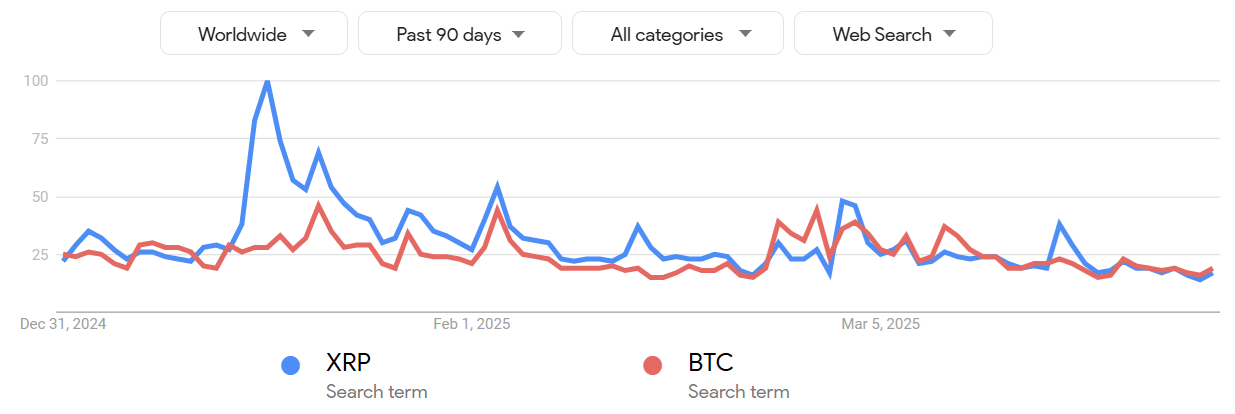On March 19, the CEO of Ripple, Brad Garlinghouse, announced that the company received clearance from the US Securities and Exchange Commission concerning an alleged $1.3 billion unregistered securities offering. Following this announcement, XRP’s price surged to $2.59, although it later experienced a 22% correction, settling at $2.02 by March 31.
Investors are expressing concern that a more significant price drop may be on the horizon, as XRP is currently trading 39% below its all-time high of $3.40 reached on January 16. Additionally, the perpetual futures for XRP show a strong inclination towards leveraged bearish positions.
Increased demand for bearish positions amid XRP’s downturn
The funding rate turns positive when long positions (buyers) pursue more leverage, while it becomes negative when short positions (sellers) dominate. In stable market conditions, it typically varies between 0.1% and 0.3% weekly to mitigate exchange risks and capital costs. On the contrary, negative funding rates are often interpreted as strong bearish signals.

XRP futures 8-hour funding rate. Source: Laevitas.ch
Currently, the XRP funding rate is at -0.14% every eight hours, which equates to a weekly cost of 0.3%. This suggests that bearish traders are incurring costs for leverage, indicating diminished investor confidence in XRP. Traders should also examine the demand for XRP margin trading to see if this bearish outlook is consistent beyond just the futures markets.
Unlike derivative contracts that always necessitate both a buyer and seller, margin markets allow traders to borrow stablecoins to purchase XRP in the spot market. Similarly, bearish traders can borrow XRP to create short positions, anticipating a decline in price.

XRP margin long-to-short ratio at OKX. Source: OKX
The XRP long-to-short margin ratio at OKX is currently at 2x in favor of long positions (buyers), approaching its lowest point in over six months. Typically, extreme confidence pushes this ratio above 40x, while readings below 5x favoring long positions tend to be seen as bearish indications.
Increased awareness of XRP due to presidential mention, creating potential for future price increases
While both XRP derivatives and margin markets suggest bearish trends, the cryptocurrency is gaining significant media attention. Notably, on March 2, former President Donald Trump referenced XRP, along with Solana and Cardano, as suitable candidates for the country’s digital asset strategic reserves.

Google search trends for XRP and BTC. Source: GoogleTrends
During a brief period, Google search trends for XRP surpassed those for Bitcoin between March 2 and March 3. A similar spike was noted on March 19 after the comments made by Ripple’s CEO regarding the expected SEC ruling. As the third-largest cryptocurrency by market capitalization (excluding stablecoins), XRP stands to benefit from its early adoption and substantial liquidity.
Related: Is the XRP price around $2 a chance or a sign of the end of the bull market? Analysts weigh in
On March 26, Interactive Brokers, a global traditional finance brokerage, revealed it would expand its cryptocurrency offerings to encompass Solana, Cardano, XRP, and Dogecoin. Since 2021, the platform has provided trading options for Bitcoin, Ether, Litecoin, and Bitcoin Cash pairs.
This broader acceptance by conventional intermediaries, along with rising Google search interest, bolsters XRP’s standing as a significant altcoin. It also sets the stage for increased capital inflows once macroeconomic conditions stabilize and retail investors begin to seek out altcoins with strong marketing appeal as viable alternatives to traditional financial options, like Ripple.
